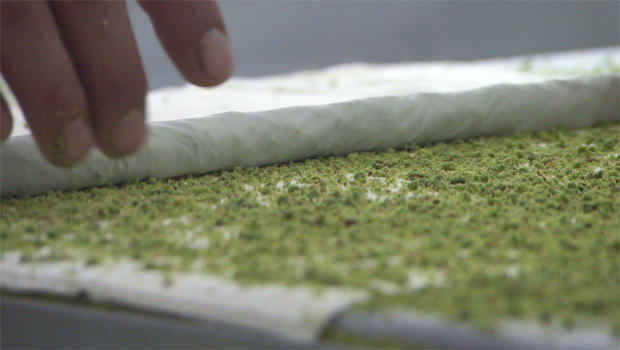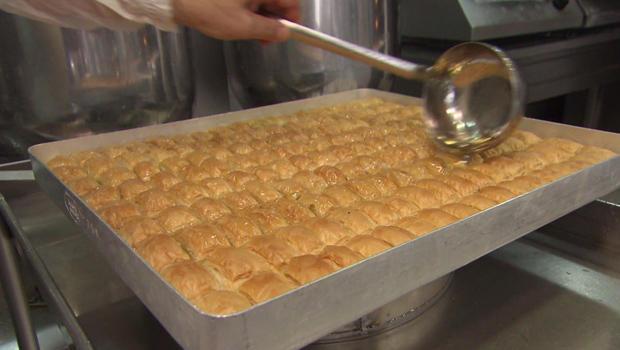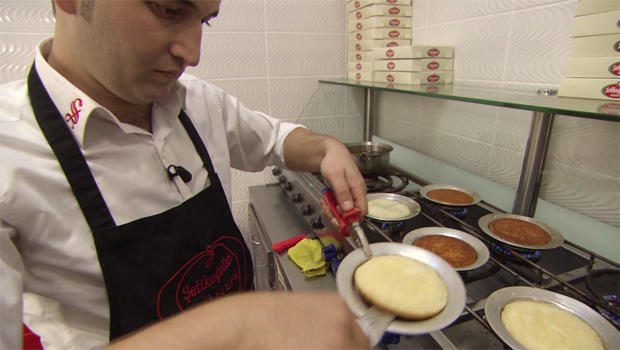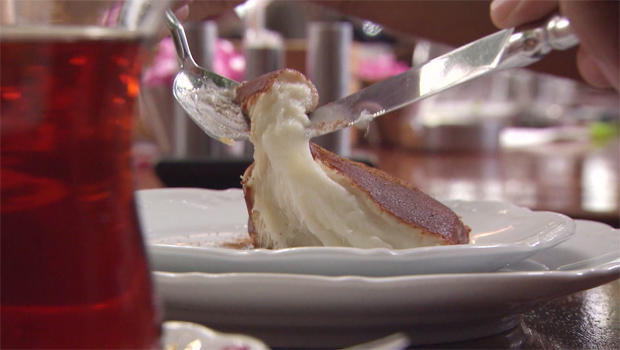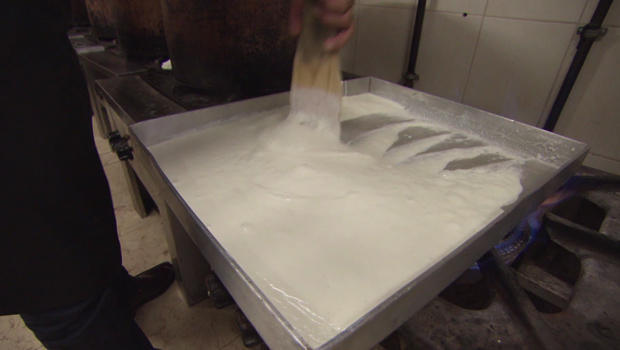Turkish delights: Sweets from the Ottoman Empire
Holly Williams samples some just-delicious desserts in Turkey:
On the shores of the Bosphorus, the strait of water that divides Europe on one bank from Asia on the other, sits Istanbul. It's now an overcrowded Turkish city of 15 million people … a place where tradition and modernity rub shoulders.
But for nearly 500 years Istanbul was the capital of the Ottoman Empire, a colossus that stretched from the Arabian Gulf, across North Africa, and into Greece and Eastern Europe.
And though the empire collapsed in the flames of the First World War, in Istanbul Ottoman traditions still live on, including in the kitchen -- and especially when it comes to anything sweet.
Baklava is still eaten in nearly all the lands the Ottomans conquered.
And the members of the Gulluoglu family are the most famous baklava bakers in Turkey.
Murat Gulluoglu, who just graduated with a degree in international relations, is a sixth-generation baklava maker.
"Baklava-making was my kind of destiny, and also my passion, because I have been doing this since I was, like, five or six," he said.
Between paper-thin layers of filo pastry, they sandwich crushed pistachios grown in southern Turkey.
After 30 minutes in a scorching oven, the baklava's doused with boiling hot syrup.
"It's been known from the 11th Century-written dictionary that Turks have been dealing with filo pastries," Murat said. "Almost a thousand years ago! It can be even before then."
But the Ottomans also discovered new temptations, and one of them can still be found in the shadows of a 1,600-year-old aqueduct.
It's thought that kunefe was first savored in the Arab cities of the Levant.
It's made from angels' hair pastry, with a heart of sticky, unsalted goat's cheese.
Traditionally, it was cooked over a charcoal brazier. But in Ferhat Tegin's busy working men's diner, he uses 10 gas burners to keep the kunefes coming thick and fast -- all topped with a dollop of vanilla ice cream and a sprinkle of pistachios.
It's incredibly calorific! Ferhat told us that in the interests of his waistline, he limits himself to just one kunefe a day.
But it wasn't just indulgent sweets that the Turks brought home from the far corners of their empire. The Ottoman ruler, the Sultan, collected WOMEN for his harem. And the harem needed to eat.
Williams journeyed down the Bosphorus, past old Ottoman palaces and fortresses, to find a dessert that, according to Turkish legend, was invented and served in the Sultan's harem.
The restaurant Sutis is an Istanbul institution, famous for its rich and creamy desserts.
And kazindibi is the queen of them all. It's a sticky, sugary milk pudding, which, bizarrely, is made from chicken.
"It's such a strange idea, to take a chicken and think that you're going to make a milk pudding out of it!" said Williams.
"If you look at the Ottoman cuisines, that is basically one of the first fusion kitchens in the world," said Gokcen Ceylan, a gourmet tour guide. "You've got guys from Arab peninsula, from Russia, from Africa, from Europe -- all the chefs combining their knowledge and skills and come up with this interesting stuff."
The chicken's combined with rice, flour and sugar, boiled in a vat of buffalo milk for two hours, and then cooked in a tray sprinkled with sugar, so its top is perfectly caramelized.
The sun set on the Ottomans in 1922, and modern Turkey rose from the ashes. But in the kitchens of Istanbul, sweet memories of an old empire linger on.
For more info:
- Karakoy Gulluoglu, Istanbul
- Kunefeci Sefikogullari, Istanbul (Trip Advisor)
- Sutis, Istanbul
- The Gourmet Holidays (Tours), Istanbul

